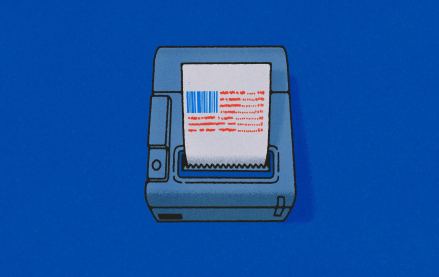
By Catherine Williams, Chief Data Scientist, AppNexus
Last week, you read about AppNexus’ initiative to rid its platform of as much invalid traffic as possible. The undertaking was complex, but through a combination of aggressive policy enforcement and sophisticated data science measures, we did it.
As a mathematician and data scientist, what interests me even more is what we learned along the way. We set out to develop some algorithms to clean our platform of invalid traffic and in the process came to a deeper understanding of the system and improved the whole thing.
By stripping out extraneous layers of intermediation that sometimes facilitate invalid traffic, we streamlined our marketplace in ways that will benefit both advertisers and publishers. In an industry that is always under close scrutiny, these developments should excite everyone.
Here’s the inside story.
Ad position: web_incontent_pos1
Inventory quality
From the start, we understood that inventory quality was more complicated than is often reported. To the lay observer, what the ad industry calls “fraud” – which I’ll define as the misallocation of advertiser dollars to bad traffic – seems directly correlated to the volume of invalid inventory on a platform. In other words, if X% of inventory is invalid, then X% of advertising dollars are lost. It’s a logical assumption, but it’s actually not the case.
Even before we launched our company-wide initiative, buyers on our platform made roughly 65 percent of their purchases in a white-list environment, meaning via seller-whitelisting or domain-whitelisting.
As such, only about 3 percent of advertiser dollars found their way to the invalid impressions we ultimately pulled off the platform.
Nevertheless, we regarded invalid traffic as a serious challenge and were determined to combat it. First we ended the longstanding practice of relying on seller-provided domains for our on-platform supply and now rely instead on domains we detect. Second, we dedicated a team of data scientists to the task of identifying non-human traffic patterns. Third, as a consequence of our data science findings, we encouraged sellers to resell only inventory that they acquired directly from publishers (including owned and operated inventory), thus minimizing the arbitrage practice of buying and reselling inventory from SSPs and ad networks. Fourth, we leveraged the data science team’s findings to screen out invalid inventory from our platform on a pre-bid basis. And we’re making an ongoing investment in data science and partnerships with industry groups and other ecosystem players.
Simplify the ecosystem
Strictly speaking, the most important result of our inventory quality initiative is the establishment of a premium platform with rigorous detection and policy enforcement mechanisms. Prior to our policy change, 97 percent of RTB spend on our platform was directed at high-quality inventory. Now that ratio is 100 percent.
Ad position: web_incontent_pos2
For marketplace participants, eliminating these low-quality transactions had profound and tangible results. Publishers have experienced an average rise in CPMs of 175 percent, while advertisers have seen average view-through rates increase 75 percent and post-click conversions, 130 percent.
A key element of inventory quality involves simplifying the ecosystem. By encouraging sellers to re-sell only inventory bought directly from publishers, we reduced the daisy-chain practice of bouncing the same impression between multiple SSPs and networks – a practice that opens the door to invalid traffic, and which can also degrade each advertising dollar. Going forward, a streamlined platform will return a greater portion of spend to publishers.
For advertisers, a streamlined platform that delivers heightened average performance rates is also good news; it eliminates the need to assemble a prophylaxis of complicated measures and third-party vendors to ensure the validity of impressions and measure viewability or conversion rates.

(Numbers are an estimate and meant to be indicative only)
What it all means
It doesn’t take more than a momentary glimpse at the LUMAscape to appreciate the complexity of the ad tech ecosystem. On the other hand, industry analysts expect we are entering a period of consolidation. As a handful of end-to-end, full-stack platforms absorb and supplant point solutions, buyers and sellers should experience – and certainly, they will be in their right to demand – a more streamlined marketplace.
Removing excess layers of intermediation helps publishers capture greater value and empowers buyers to spend less time and money on “fraud prophylaxis” measures.
Our experience with inventory quality was in many ways a welcomed anomaly. Usually when you fix one problem, another pops up in its place — an endless game of whack-a-mole. This time, we fixed one problem (invalid traffic) by intention, and another problem (complexity, opacity) got fixed as a result. That’s good news, and news worth telling.
More from Digiday
Sliders test article
Amazon bulldozes into new markets, upending the status quo and challenging rivals. Today, it’s the turn of the ad-supported streaming world, and Amazon is coming out of the gate strong. Why, you ask? Because Amazon is serving marketers an opportunity beginning today to reach a whopping 115 million monthly viewers in the U.S. alone, courtesy […]

How CTV and DOOH are growing this political season for smaller agencies
Connected TV and digital out-of-home are playing a bigger role in upcoming elections and politics – especially for smaller agencies looking to place clients’ dollars.

CMO Strategies: Advertisers identify the top attributes on ad-supported streaming platforms
This is the third installment in Digiday’s multi-part series covering the top ad-supported streaming services and part of Digiday’s CMO Strategies series. In this report, we examine which ad attributes matter the most to marketers on streaming platforms.
Ad position: web_bfu
![V7_EmergenceOfAPremiumMarketplace[1][1]](https://staging.digiday.com/wp-content/uploads/sites/3/2015/09/V7_EmergenceOfAPremiumMarketplace11-744x561.png)


